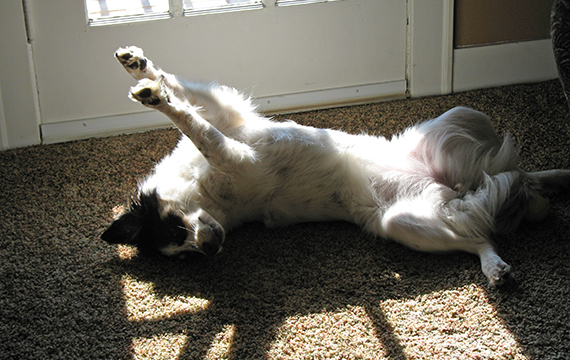 Dogs are social animals which can make home alone time difficult. Dogs that cannot manage being left alone are anxious and as a result may be vocal, destructive or have potty accidents inside. Our responsibility is to teach our dogs to cope and relax in our absence. There are a number of things you can do to help your dog learn to be alone:
Dogs are social animals which can make home alone time difficult. Dogs that cannot manage being left alone are anxious and as a result may be vocal, destructive or have potty accidents inside. Our responsibility is to teach our dogs to cope and relax in our absence. There are a number of things you can do to help your dog learn to be alone:
1. Exercise your dog before you leave. He’ll be happier and more likely to relax if he’s burned off some energy. “A tired dog is a good dog!”
2. Provide a safe area for your dog to spend time alone so he can’t be practicing inappropriate behaviors (chewing on the furniture, barking at windows, eliminating on the rug, etc.). Use a crate for up to 4 hours max, an exercise pen or a dog-proofed room with a baby gate for longer periods of time. (See crate training for specifics.)
3. Provide your dog with safe toys/activities during your absence. Some ideas: stuffed Kong toys, Buster Cubes, treat balls, Nylabones, hidden treats, etc.
4. Begin with short absences and build duration with success.
5. Play the radio or turn on the television. These are noises associated with your presence and will also help to mask noises outside.
6. Keep your departures and arrivals calm and unemotional.
7. Do not let your dog out of confinement if he is being vocal or out of control. Reward your dog with freedom when he is quiet and relatively calm.
8. As your dog matures and is handling home alone time well, you can increase his freedom gradually. If your dog experiences difficulty at any point, go back to limiting his space for awhile. If you encounter problems or have questions, please contact your trainer.
9. If you work from home, it’s still important to give your dog structured alone time. It makes for a less stressful time if they have to be without you for any reason.


